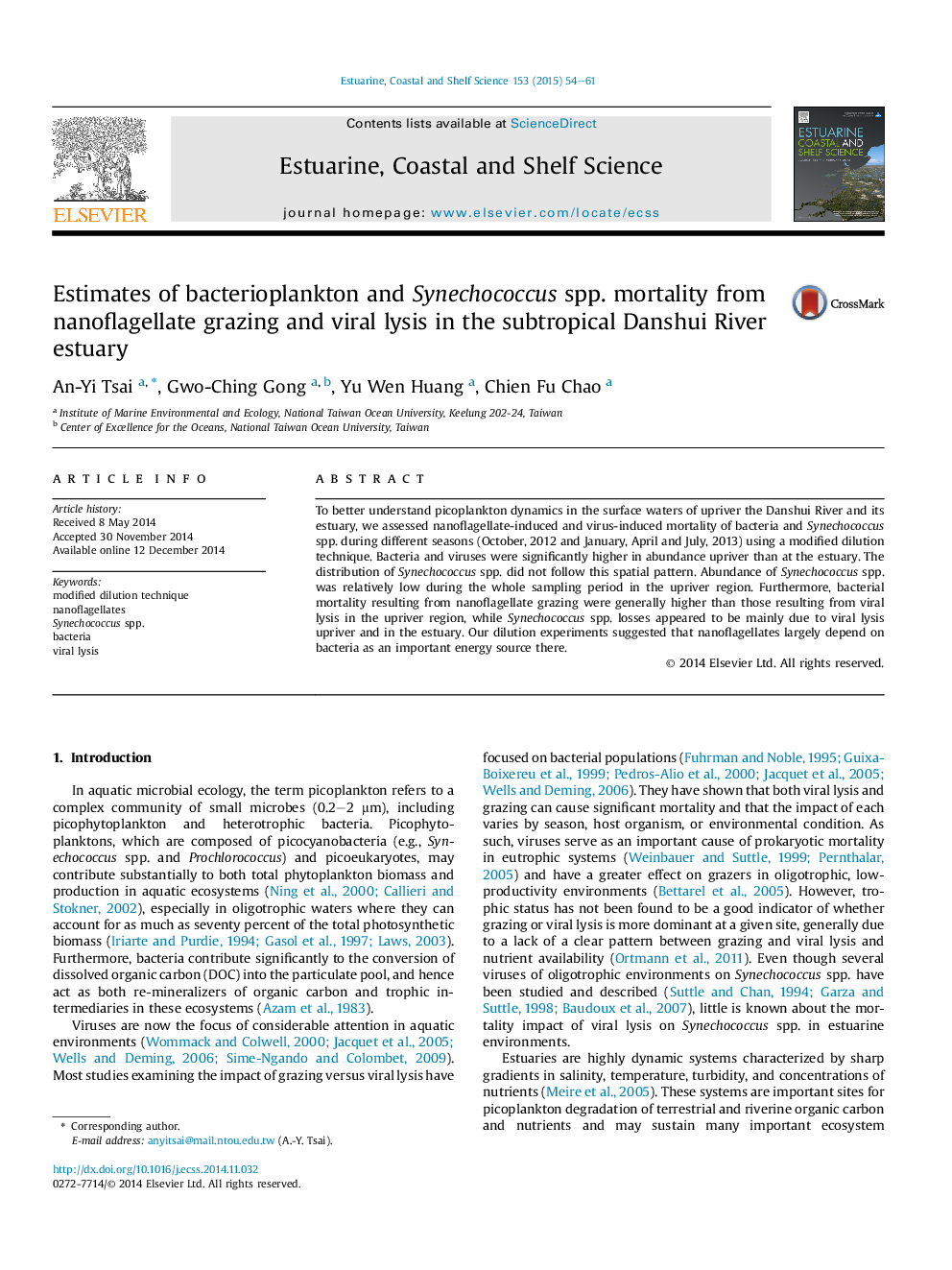| Article ID | Journal | Published Year | Pages | File Type |
|---|---|---|---|---|
| 4539592 | Estuarine, Coastal and Shelf Science | 2015 | 8 Pages |
•Grazers and viruses were responsible for 89%–97% of the bacterial growth in this study.•Nanoflagellate grazing was responsible for most of the bacterial mortality in this study.•Synechococcus spp. losses appeared to be mainly due to viral lysis in the estuary.
To better understand picoplankton dynamics in the surface waters of upriver the Danshui River and its estuary, we assessed nanoflagellate-induced and virus-induced mortality of bacteria and Synechococcus spp. during different seasons (October, 2012 and January, April and July, 2013) using a modified dilution technique. Bacteria and viruses were significantly higher in abundance upriver than at the estuary. The distribution of Synechococcus spp. did not follow this spatial pattern. Abundance of Synechococcus spp. was relatively low during the whole sampling period in the upriver region. Furthermore, bacterial mortality resulting from nanoflagellate grazing were generally higher than those resulting from viral lysis in the upriver region, while Synechococcus spp. losses appeared to be mainly due to viral lysis upriver and in the estuary. Our dilution experiments suggested that nanoflagellates largely depend on bacteria as an important energy source there.
